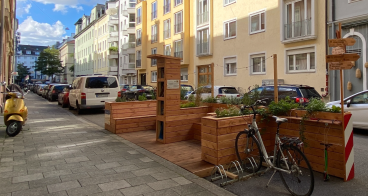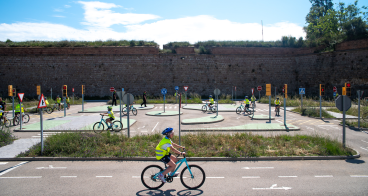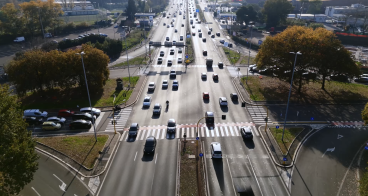Proximity for all: implementing inclusive ±15-Minute City concepts
Researchers from Munich shed new light on the accessibility and inclusion debate in urban mobility. Taking Carlos Moreno’s 15-Minute City concept as a starting point, nurtured by the latest insights from recent experiments, the scientists developed a practitioner’s roadmap highlighting concrete steps to plan, develop and implement the +-15-Minute City not only in a few neighbourhoods, but for all citizens, in any city.
The 15-Minute City’s primary objective is to give people access to basic essentials (e.g. schools, shops, sport facilities, etc.) within 15-minute walking or cycling distance. It revolves around four dimensions: proximity, to reduce distances to destination; diversity of land use and people to make all relevant destinations more easily reachable; density to ensure a minimum customer pool for local businesses; and ubiquity so that the 15-Minute City is available and affordable for all citizens.
Planning principles putting accessibility at their core are not new and have been variously conceptualised over the past decades. In fact, the 15-Minute City can be considered as part of a broader movement that started with the Garden City and includes the Neighbourhood Unit, Transit Oriented Development, or Chronourbanism. All these models offer alternatives to car-centred urban and mobility planning practices.
It is worth noting that many cities have stated – more or less formally – their ambition to develop 10, 15, and 20-minutes cities or neighbourhoods. To account for this diversity, the authors of the TUM study coined the expression “±15-Minute City.“ In the wake of the COVID-19-pandemic and with Paris as a leading example, Europe has become the hotbed for new ±15-Minute Cities with cities like Rome, Dublin, and Utrecht. In total, 16 cities worldwide have adopted or are in the process of officially adopting a ±15-Minute City strategy.
Practitioners’ roadmap to implement the ±15-Minute City
In order to facilitate the implementation of the ±15-Minute City, the study lays out a roadmap for practitioners with dedicated actions to plan, develop, and implement concepts in specific cities and neighbourhoods. The roadmap consists of five main steps:
- Envision a ±15-Minute City: there is no one-size-fits-all ±15-Minute City recipe that can be transferred from one city to another. Therefore, it is essential that cities create their own vision and objectives for their ±15-Minute City, as time thresholds and relevant destinations can differ from one place to another. Involving stakeholders and citizens is a key aspect of this step.
- Measure it: once the vision has been created, it is important to develop the right metrics and tools to measure the status quo and how the situation is evolving. Indicators can monitor e.g. the use of sustainable mobility modes, the access to services, or the walkability and cyclability.
- Identify areas of need: before implementation, it is crucial to understand which actions are needed at which locations (combining local expert knowledge with spatial analysis).
- Create an action plan: this plan should consider actors’ responsibilities, including a timeline for activities and measures, and budgets to achieve the main vision objectives.
- Implement by phases: it is important to not only consider the implementation of a measure only once but to have a long-term strategic vision, while introducing immediate measures such as street experiments and localised street interventions that yield positive results in a shorter period.
Socio-economic benefits of the ±15-Minute City
Redesigning streets in line with the ±15-Minute City concept unlocks a range of benefits for cities. First, improved walkability and cyclability increases social cohesion while mixed uses and activities make areas safer. In addition, walkable environments have shown a positive correlation with the enhanced value of local services, the creation of new job opportunities, and the support of local businesses and street markets. Lastly, active mobility modes promote mental and physical health, while bringing positive impacts in terms of air and noise pollution, directly affecting the citizens’ health.
Towards the ±15-Minute City for all
Importantly, for the ±15-Minute City to be considered a human-centred model, it must include policies and actions that address vulnerable social categories (e.g. children, people with disability, low-income groups, etc.)
With this in mind, a central aspect of the ±15-Minute City roadmap is that street and public space redesign in neighbourhoods should benefit people of all backgrounds, ages, and abilities. Only then can a ±15-Minute City be truly accessible for ALL.
Want to learn more about accessibility and the ±15-Minute City? Access the full study in the file section below.
Published on 09 December 2022.






